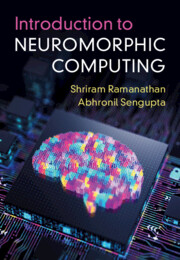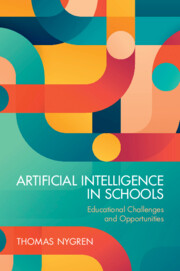Refine search
Actions for selected content:
3340 results in Artificial Intelligence and Natural Language Processing

Knowledge-Infused Learning
- Neurosymbolic AI for Explainability, Interpretability, and Safety
- Coming soon
-
- Expected online publication date:
- March 2026
- Print publication:
- 31 March 2026
-
- Book
- Export citation

Speech Technology
- A Theoretical and Practical Introduction
- Coming soon
-
- Expected online publication date:
- March 2026
- Print publication:
- 31 March 2026
-
- Textbook
- Export citation
1 - Intelligence in Biological Systems
-
- Book:
- Introduction to Neuromorphic Computing
- Print publication:
- 22 January 2026, pp 1-14
-
- Chapter
- Export citation
3 - Artificial Synapses
-
- Book:
- Introduction to Neuromorphic Computing
- Print publication:
- 22 January 2026, pp 27-76
-
- Chapter
- Export citation
Index
-
- Book:
- Introduction to Neuromorphic Computing
- Print publication:
- 22 January 2026, pp 189-191
-
- Chapter
- Export citation
Preface
-
- Book:
- Introduction to Neuromorphic Computing
- Print publication:
- 22 January 2026, pp xi-xii
-
- Chapter
- Export citation
6 - System Design
-
- Book:
- Introduction to Neuromorphic Computing
- Print publication:
- 22 January 2026, pp 135-144
-
- Chapter
- Export citation
9 - Practice Problems
-
- Book:
- Introduction to Neuromorphic Computing
- Print publication:
- 22 January 2026, pp 182-188
-
- Chapter
- Export citation
8 - Lifelong Learning with AI Algorithms and Hardware
-
- Book:
- Introduction to Neuromorphic Computing
- Print publication:
- 22 January 2026, pp 169-181
-
- Chapter
- Export citation
4 - Artificial Neurons
-
- Book:
- Introduction to Neuromorphic Computing
- Print publication:
- 22 January 2026, pp 77-112
-
- Chapter
- Export citation
7 - Neuromorphic Algorithms
-
- Book:
- Introduction to Neuromorphic Computing
- Print publication:
- 22 January 2026, pp 145-168
-
- Chapter
- Export citation
2 - Principles of Artificial Neural Networks
-
- Book:
- Introduction to Neuromorphic Computing
- Print publication:
- 22 January 2026, pp 15-26
-
- Chapter
- Export citation
Frontmatter
-
- Book:
- Introduction to Neuromorphic Computing
- Print publication:
- 22 January 2026, pp i-iv
-
- Chapter
- Export citation
5 - Examples of Applications in Artificial Neural Networks
-
- Book:
- Introduction to Neuromorphic Computing
- Print publication:
- 22 January 2026, pp 113-134
-
- Chapter
- Export citation
Contents
-
- Book:
- Introduction to Neuromorphic Computing
- Print publication:
- 22 January 2026, pp vii-x
-
- Chapter
- Export citation
Dedication
-
- Book:
- Introduction to Neuromorphic Computing
- Print publication:
- 22 January 2026, pp v-vi
-
- Chapter
- Export citation

Introduction to Neuromorphic Computing
-
- Expected online publication date:
- January 2026
- Print publication:
- 22 January 2026

Artificial Intelligence in Schools
- Educational Challenges and Opportunities
-
- Published online:
- 24 December 2025
- Print publication:
- 30 October 2025
References
-
- Book:
- Artificial Intelligence in Schools
- Published online:
- 24 December 2025
- Print publication:
- 30 October 2025, pp 160-182
-
- Chapter
- Export citation
Contents
-
- Book:
- Artificial Intelligence in Schools
- Published online:
- 24 December 2025
- Print publication:
- 30 October 2025, pp v-vi
-
- Chapter
- Export citation
